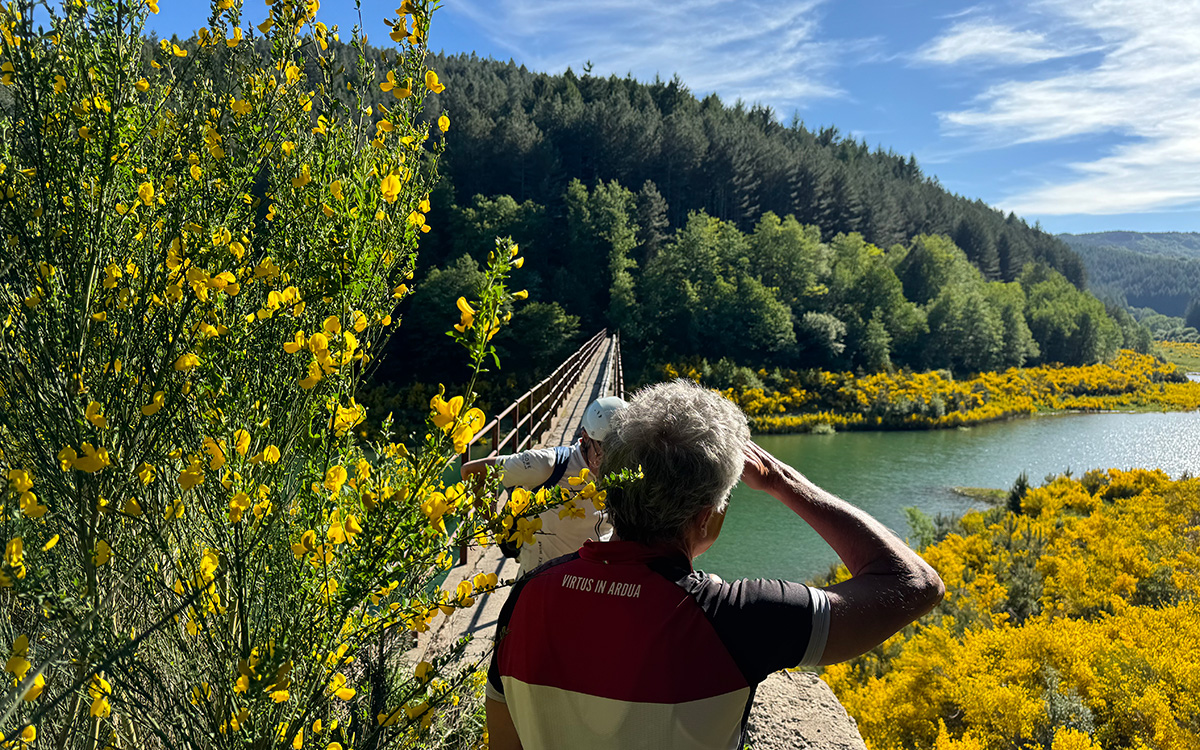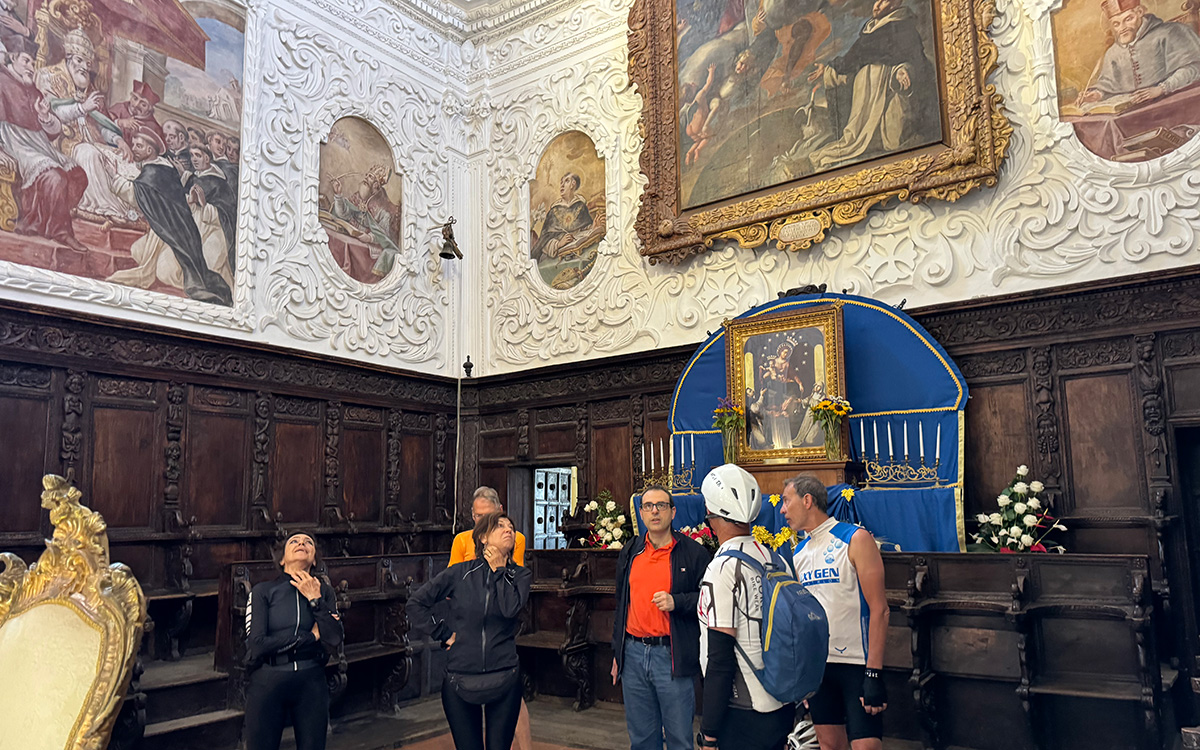
Eleven of us from Pollino to the Strait of Sicily
BY Angelo Melone
There is a different Calabria from the one that monopolises summer commercials. It is different because of the characteristics of the land, beautiful, far from the famous seaside resorts and stretches of coastline that are fascinating but often flooded with obsessive tourism; it is also different in the tourists who pass through it and in the rapport the inhabitants have with them. It is the Calabria of impressive nature, of silences and forests, of lakes and roads with little traffic, of villages little ruined by speculation that conceal treasures of art and history, of the perception of the sea even at high altitudes, of hotels, trattorias (perhaps in a wood, far from everything) and inns where you are welcomed with a smile and refreshed with delicious food, often zero-kilometre, until you can't take it anymore.
We crossed it in mid-May, following a fascinating proposal for a bicycle journey: it is the Ciclovia dei Parchi della Calabria, the project that is making its way throughout Europe among lovers of 'slow travel': 545 kilometres and more than ten thousand metres of altitude difference (that's a lot: twice the height of Mont Blanc) in four natural parks and between two seas, from Laino to Reggio Calabria via Pollino, Sila, Serre and Aspromonte.
The group is almost all cyclists with a travel background, two out of eleven with e-bikes. In short: for them a wonderful adventure, for the Ciclovia a good test. Result? The enthusiasm upon arrival after ten days on the Reggio promenade seemed almost excessive.
Just a few travel notes. No pretense of recounting Calabria to the Calabrians, but the magic of travelling along it on two wheels that glide silently through the silence of the woods or in the wind of the highlands is – this is – a special point of view.
Starting from the Pollino, from the magnetic climb from Scalea station up the mountain along the green canyon carved by the Lao river. The summit of Mount Pollino accompanies us from Laino to Mormanno (with its church that hides the remains of a 13th-century convent in its basement), and then the crib town of Morano, down to Castrovillari and up to the perched village of San Donato di Ninea and on to Acri.

We are at the gateway to Sila, which greets us at the end of a long climb with a breathtaking panorama on a clear day. Alessandro, a consummate bike traveller, describes it this way: 'When we arrive at the first plateau, we are enraptured by the yellow fields that stretch as far as the eye can see as we have never seen them before. Everywhere we look there are pine forests and gorse.
They will accompany us for a good part of the 150 km in Sila, skirting three lakes (the fascinating Cecita, Arvo and Ampollino) with a few villages as far as Tiriolo, which in fact marks the entrance to the Serre park. Tiriolo has a clear day in store for us, with the view sweeping from Stromboli in the Tyrrhenian Sea to the coast fading into the Ionian Sea. Along the way, you also discover realities such as the young company on Lake Cecita that produces milk, yoghurt and ice cream only from local dairy farms; or you come across hotels that have made local products their calling card or trekking among the works of art of MABOS. And again, the beautiful museum and ancient church with the works of Mattia Preti in the delightful Taverna or the 'Chiosco Rosso' hiking centre in Lorica.

And here we are in the Serre park, a contrasting mixture of strong nature and - for a stretch - lesser-kept villages. Up to the dense forest that leads towards Serra San Bruno and its incredible Certosa. A long stage, in which we have miscalculated the time: but on the way, for the group of hungry cyclists, a small bakery has reopened its doors on purpose, organising gigantic sandwiches with caciocavallo cheese, aubergines and tomatoes in oil. A lunch fit for kings.
Then it's off to Aspromonte. You go up in altitude, the route winds its way over a thousand metres. 'We enter a beech forest, so dense that we can no longer see the sky,' Alessandro notes. 'We are in the middle of nowhere, or rather in the endless forest that stretches endlessly around us. As so often these days, we don't meet a soul'.
The route passes through Mongiana (with the remains of the Bourbon ironworks) and Fabrizia and then along the plateau to Gambarie. Shortly after, the road begins to descend and suddenly everything opens up to infinity: there is Etna (blurred in the haze), Sicily, the Aeolian Islands, the Strait and – below – Reggio Calabria.

Angelo Melone was a journalist first at Unità then at Repubblica. He loves doing many things. Among those that bring him to this site: a passion for travelling, lots of cycling and trekking.
The full text was published in 'Il Quotidiano del Sud' [23 June 2024].




